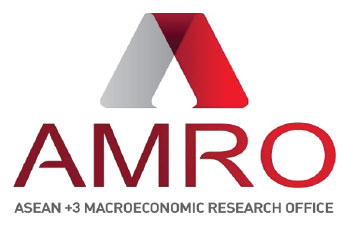The next crisis will not take the same shape as the last one.
The tides of the global economy are once again shifting—quietly, but unmistakably. In the aftermath of the once-in-a-century COVID-19 pandemic shock, the world now faces a complex mix of challenges—global interest rate uncertainty, heightened geopolitical tensions, climate-related risks, and a reconfiguration of global supply chains. Inflationary pressures remain persistent, and navigating monetary policy has become an increasingly delicate endeavor.
In this context, the question is not merely how to preserve international financial stability or brace for the next crisis, but how institutions themselves are operated and nurtured—as “living institutions.” Viewing the international financial system as an “ecosystem” has never been more relevant.
An ecosystem is not just a collection of diverse players. It is a dynamic structure in which each part fulfils a role, interacts with others, and contributes to the overall balance. Likewise, the global financial system cannot ensure long-term sustainability without institutional order, mutual trust, swift crisis response, and the adaptability to new risks.
In essence, economic and financial systems do not function under complete laissez-faire. Domestically, governments and central banks act with legal authority to stabilize markets and enforce rules. However, in cross-border finance, there is no absolute authority with enforcement power. Global financial governance must rely on shared rules, mutual monitoring, and—crucially—trust and cooperation.
Over the years, countries have explored voluntary coordination and built international systems to support this need. Historically, institutions like the International Monetary Fund (IMF) and World Bank contributed to postwar recovery and stability, while the G20 and Financial Stability Board (FSB) helped shape regulatory responses after the 2008 Global Financial Crisis. Yet, these frameworks are not infallible. Their responsiveness to emerging challenges and their legitimacy in bridging political divides are not always assured.
In that light, ASEAN+3 (the 10 ASEAN nations plus Japan; China; Hong Kong, China; and Korea) stands out as a hopeful model. United by the hard-earned lessons of the Asian Financial Crisis, the region chose to build and develop its own systems. Chief among them are the Chiang Mai Initiative Multilateralisation (CMIM) and the ASEAN+3 Macroeconomic Research Office (AMRO).
CMIM provides a mechanism for short-term liquidity support in times of financial crisis within the region. It allows member economies to pool foreign exchange reserves and extend mutual assistance when needed. AMRO supports this mechanism by serving as its intellectual backbone—monitoring regional economies, offering early warnings, and providing policy advice. Together, CMIM and AMRO form the twin pillars of the region’s financial safety net, combining institutional and analytical strength.
What is especially remarkable is that both mechanisms are built not on coercion, but on consensus and trust. No single actor dominates; instead, economies large and small contribute as respected partners to the design and evolution of the system. This structure mirrors an ecosystem, where different species play distinct yet interconnected roles to maintain overall harmony
ASEAN+3 cooperation goes beyond crisis preparedness. It has shown institutional learning and the capacity to adapt. Despite varying levels of economic development and institutional maturity, the region is making steady progress in addressing longer-term issues, such as capital market development, green finance, and digital finance innovation.
At the heart of this effort lies a clear philosophy: cooperation is not a one-off event but a continuous process. Institutions are more than just sets of rules—they are the product of relationships forged through trust, knowledge, and time. Organizations like AMRO, grounded in regional realities and guided by neutral analysis, play an increasingly vital role in advancing these efforts while remaining free from political interference.
Today, the world stands on the cusp of another paradigm shift. The evolving US-China relationship, the rise of the Global South, the acceleration of AI, and the intensifying climate crisis—all challenge the foundations of the existing international order. The credibility of global institutions is under constant scrutiny. In this climate, the ASEAN+3 framework, with its commitment to inclusive and sustained cooperation, offers a potential blueprint for broader global governance.
Institutions are not static vessels. Like ecosystems, they must breathe and evolve with their environments. Their vitality lies not in nations or organizations alone, but in the trust and commitment between people working together.
We may not be able to predict when or how the next crisis will strike. However, we can say with certainty: resilience must be cultivated today. The collective wisdom and institutional progress of ASEAN+3 are not just legacies of past crises—they are forward-looking investments in our shared future.
It is our shared responsibility not only to preserve these institutions but also to help them grow. International financial stability is not something bestowed from above—it is upheld by the shared belief and continued dedication of many committed players.
